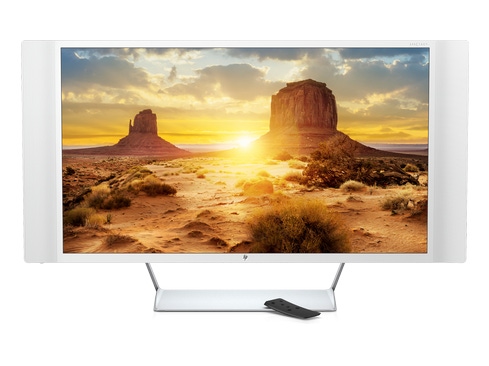HP Pavilion, Envy, Envy Phoenix Desktops Target Back-To-School Buyers
New colors, upgraded processors, and a host of connectivity parts are among the features in HP's desktop update, which includes new models in the Pavilion, Envy, and Envy Phoenix lines.


Laptops For Business: 8 Worth Buying
Laptops For Business: 8 Worth Buying (Click image for larger view and slideshow.)
Consumer technology giant HP unveiled a broad range of new personal computers for the back-to-school season, including Pavilion All-in-One (AIO) PCs with a pedestal floating display, Pavilion, Envy, and Envy Phoenix desktop towers, and a Spectre Studio display with Ultra-High-Definition (UDH) 4K resolution.
While much of the industry is awaiting the launch of Microsoft's Windows 10 later this summer -- possibly as early as July -- HP is still moving ahead in the personal and business PC markets. In April, the company launched a new series of upgrades to its laptop and convertible lines.
However, with the May 3 announcement of new Pavilion, Envy, and Envy Phoenix machines, HP is trying to show that it can be all things to all people, with updates that not only target back-to-school shoppers, but also high-end power users and price-conscious consumers.
To start, the HP AIOs boast edge-to-edge full high-definition (HD) flush glass display, HDMI out for customers to connect to a second display, two USB 3.0 ports, and a 3-in-1 media card reader located on the display chin. Four USB 2.0 ports are placed with the HDMI and LAN are placed in back.
Consumers have the choice of fourth-generation Intel Celeron processors, Intel Core i3 through i7 processors, next-generation AMD A10 and A8 processors or AMD next-generation mainstream A4 through A8 processors.
The 21.5- and 23-inch models, available at the end of June at retailers and the company’s website, start at $649.99 and $699.99.
The Pavilion Tower offers a new look with a vertically oriented design in a range of colors, and supports fourth-generation Intel Celeron processors, Intel Core i3 through i7, processors and next-generation AMD A-Series A4 through A10 processors.
The Envy and Envy Phoenix towers court consumers at the higher end of the scale, with a brushed metal chassis -- the Envy is marketed to content creators and video editors, boasting Nvidia GTX 980 or AMD Radeon R9 380 discrete graphics with support for fourth-generation Intel Core i5 and i7 processors.
The Phoenix Tower, which sports a dark aluminum chassis finished in brushed metal with a red LED accent on the front, is built for users who require top-notch graphics performance and high frame rates for gaming.
The Phoenix comes with a choice of up to Nvidia GTX 980 or AMD Radeon discrete graphics and Intel Core i5 and i7 processors.
Nvidia GeForce Experience and AMD Gaming Evolved software are also included, and the optional advanced thermal system using Closed Loop Liquid Cooling protects sensitive components while eliminating the need for throttling.
Both the Envy and Envy Phoenix towers come with dual monitor support, wireless keyboard and mouse, at least two USB 2.0 ports, up to four USB 3.0 ports, HDMI, DVI (Intel), VGA (AMD), and a 7-in-1 media card reader.
[Read about Microsoft's latest earnings.]
Finally, both tower lines offer a RAID storage option for customers to mirror content to a second hard drive and include Bang & Olufsen audio control, and a selection of up to 3TB hard disk drive (HDD), with the option to add up to a 512GB solid state drive (SSD) for storing media.
The Envy and Envy Phoenix Towers debut June 10 online with a starting price of $699.99 for the Envy Tower and $899.99 for the Envy Phoenix. The Pavilion Desktop Tower will be available on June 26 with a starting price of $449.99.
The Spectre Studio display, which starts at $999.99, will be available May 24. It features a 32-inch diagonal UHD 4K resolution (3840 x 2160) display, with a 178-degree viewing angle and multi-source picture-in-picture (PiP) and picture-by-picture (PbP) technology.
About the Author(s)
You May Also Like
How to Amplify DevOps with DevSecOps
May 22, 2024Generative AI: Use Cases and Risks in 2024
May 29, 2024Smart Service Management
June 4, 2024







